Welding is a very broad definition that covers the process of permanently joining two elements, usually made of metal. There are various welding methods, and each of them is designed for processing different materials. There are also basic differences between each method, as well as the conditions under which they are applied. One of the most popular welding methods is MIG / MAG. But what exactly is it, and when is it used? Read the article below to find out.
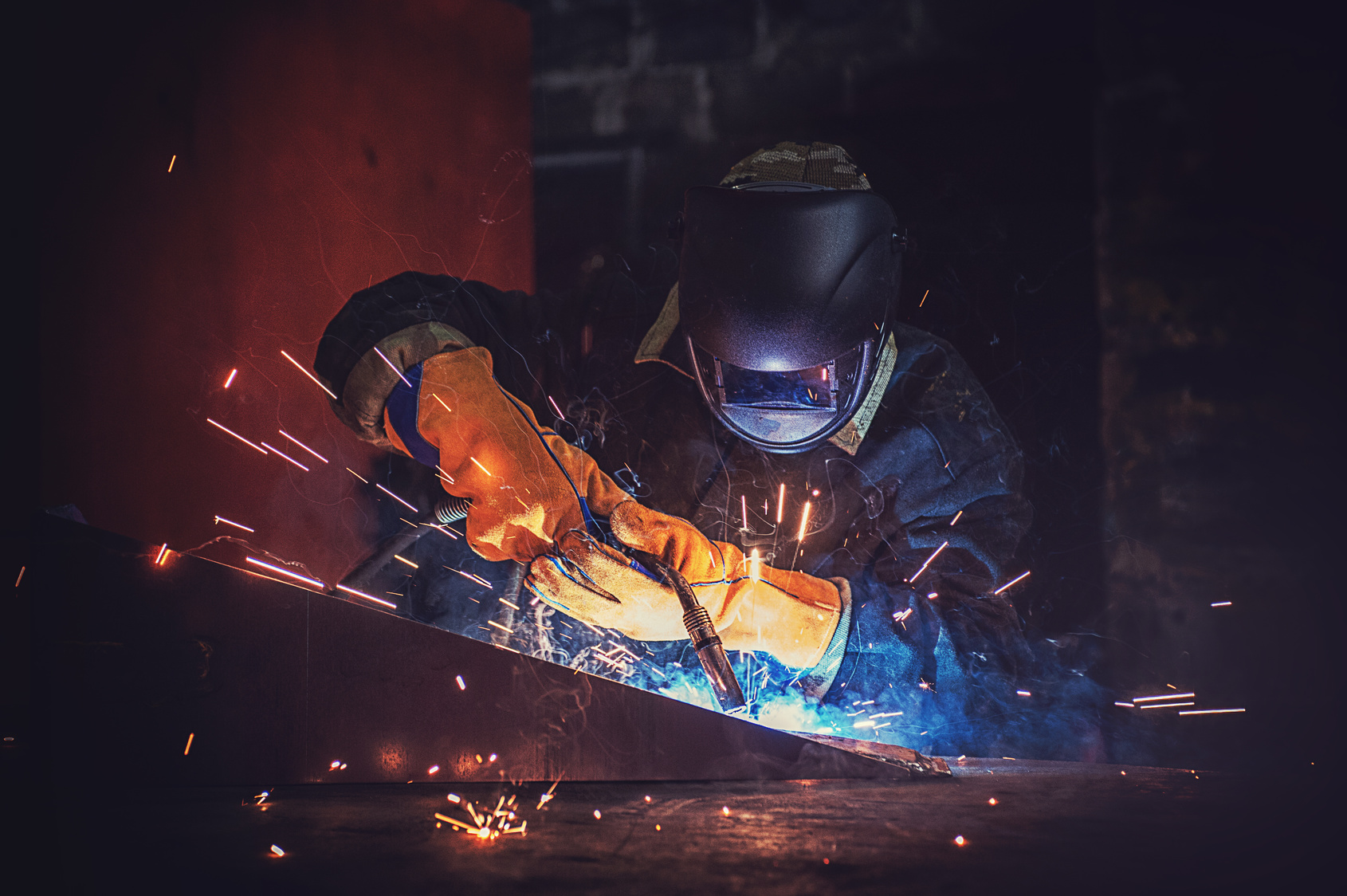
Welding is a very broad definition that covers the process of permanently joining two elements, usually made of metal. There are various welding methods, and each of them is designed for processing different materials. There are also basic differences between each method, as well as the conditions under which they are applied. One of the most popular welding methods is MIG / MAG. But what exactly is it, and when is it used? Read the article below to find out.
Let’s start from the beginning. What exactly is the MIG / MAG method?
First of all, MIG / MAG welding consists of two methods – MIG and MAG. As they are both very similar, they are usually referred to together. They are classified as gas metal arc welding (GMAW) techniques. The difference between the MIG welding process, and MAG welding, is the type of gas used. MIG welding gas is an inert shielding gas, e.g. helium or argon. MAG, on the other hand, uses active shielding gases such as carbon dioxide or mixtures thereof with argon, oxygen and helium. The shield gases play an important role in the entire welding process and should be used according to the type of material being connected.
Apart from the difference in the gas used, the basic principles of MIG MAG welding are the same. The welding torch of each wire welder is equipped with a special wire feeder. It smoothly ejects the electrode wire, to which an appropriate current is applied. The arc is formed when the cable is close enough to the material. It melts both the wire and the treated surface. This then leads to the formation of a welding pool. After the torch is pulled back, the molten metal begins to solidify and forms a weld that connects the edges of both materials. The role of the shielding gas is to protect against the harmful effects of atmospheric air, which could affect the quality of the weld.
Using the MIG / MAG method
Since there is hardly any difference between MIG and MAG welding, one device can be used for both methods. All you need to do is connect an active or inert gas cylinder to the torch, and you will be able to weld various metals. So when can you use each method?
- MIG welding – for aluminum, copper, non-ferrous metals and alloys
- MAG welding – for non-alloy, low-alloy and high-alloy structural steels and other non-ferrous metals.
As a result, MIG / MAG is the most common welding method used in industry. However, the wide scope of potential uses is not its only advantage. Easy control over the process of joining elements together is another one. It is also relatively fast, and material deformation is minimal. The MIG welder torch also stands out for its high efficiency, as well as mechanization and automation possibilities. This method works best in enclosed spaces, because shielding gas could be dispersed by gusts of wind, which would significantly lower the quality of the weld.
MIG / MAG welding parameters. What should you remember?
Before deciding to use the MIG / MAG method, you should get to know its basic parameters. They have a significant impact on the quality and durability of the connection as well as the overall MIG method. You will find the most important factors below:
- Type and polarity of the welding current – usually a direct current of positive polarity is used, i.e. the welding torch is connected to the positive pole and the ground cable to the negative pole. This makes the electrode wire quickly melt. Negative (reverse) polarity adversely affects the entire process.
- Welding current intensity – determines how quickly the MIG welding wire will melt, as well as the shape and depth of the melt. Too low current makes short-circuit material pass through, which results in an oval-shaped melt. High intensity can lead to the formation of a melt cavity.
- Arc voltage – the higher the arc voltage, the longer the arc. Too high voltage causes splattering, porosity, and sticking. Too low voltage, in turn, impacts the quality of the weld.
- Speed of the wire feed – this is one of the basic parameters of MIG / MAG welders. The speed depends on the voltage level of the arc. It should be appropriately set to ensure stable wire melting.
- Type and diameter of the wire – appropriate wire should be used depending on the thickness of the processed material and the welding position. The following diameters are generally available: 0.6mm, 0.8mm, 1mm, 1.2mm, 1.6mm. The current density also plays an important role here. The smaller the diameter, the greater the density, and hence – deeper penetration.
- Shield-gas flow rate – the usual suggested gas flow rate is 10 l / min for each millimeter of the diameter of the welding wire. Values too low can lead to the formation of defects, e.g. porosity. A too high flow rate can cause arc blow.
- Free outlet – this is the length of the electrode wire extension from its melting end to the current tip, and it is regulated by setting the welding torch at the appropriate height. The length affects the melting intensity. If the free outlet is too long, the stability of the arc is disturbed, leading to shooting and splattering. A small outlet, on the other hand, makes the wire stick and can cause damage to the current tip.
- Welding speed – the speed at which the wire with a glowing electric arc is moved. It should be adapted to the electricity current, arc voltage and speed of the wire feed. The speed for manual welding is usually between 0.25 and 1.3 m / min.
- Torch angle – the angle at which the material is welded depends on the type of weld you want to achieve. If you hold the torch vertically, the depth and width of the weld will be medium-sized. Tilting in the direction of welding (pulling) will increase the depth but reduce the width. In turn, positioning the torch opposite to the direction of welding will make it more shallow and wider.
Properly determining the parameters is of great importance during MIG / MAG welding. Make sure you check them all carefully before using the welding torch.
MIG / MAG welding – proper and safe use
Now that you understand the basics of the MIG / MAG method, it’s time to prepare your welder for work and the material for processing. Where should you start?
First of all, check if there is enough electrode wire in the welder, and also if it is in good condition. If you notice any corrosion, replace it immediately. When installing a new spool, check the pressure of the wire feeder. It should allow the cable to run smoothly but not unwind by itself. The first few centimetres (approx. 8 cm) should be straightened. When cutting the wire, make sure the tip is not chipped. It is worth holding the wire while doing so, to make sure the spool does not unwind.
The material should be thoroughly cleaned as part of its preparation. An angle grinder with an abrasive disc or a steel brush would be ideal. You can also use a standard wire brush. Any visible traces of rust or paint must be removed. Not only do they hinder the ignition of the arc, but they can also change the direction of welding and affect the strength of the weld. The surface to be connected with the ground terminal should also be cleaned.
You can hold the welding torch with one or both hands. It all depends on your level of experience. If you want to weld using the MIG / MAG method with both hands, you should wear a welding helmet. Before you start, you should apply a position that allows you to monitor the weld pool. Welding torches are often ergonomically shaped, fitting comfortably in your hands.
As mentioned earlier, the angle of the torch in relation to the welding direction largely depends on the type of joint and thickness of the material. In turn, its movement results from the positioning of the processed elements in relation to each other. For edge-to-edge welding, it is common practice to use a zig-zag curved motion. It is suitable for thin surfaces and allows you to use a weld on each edge. The weld then stands out by its cleanliness. To start off with, join the two elements together at chosen points every few centimetres. This way you can avoid the gap between the materials getting bigger.
Safety first! Above all, make sure you protect your eyes. Welding arcs emit a very bright light, and even short exposure to your eyes can harm the cornea. In order to properly protect your eyesight, always use helmets with special darkening visor lenses. You can choose from among cheaper masks, which need to be held, and more comfortable fully-protective helmets. The latter let you keep both hands free. In addition, the UV radiation of the arc can also burn your skin, so don’t forget about gloves, protective sleeves, special hoods, aprons and even welding jackets, which also provide protection against sparks and splatters. They are often made of cow split leather or other fire-resistant leather materials, and are usually sewn together with Kevlar threads, which don’t melt even at very high temperatures. Sparks also pose a risk to the workplace, as they can cause a fire. To avoid this risk, you should remove all flammable objects from the surrounding space and have access to a fire extinguisher intended for extinguishing electrical devices. Sand will also do the job. Under no circumstances should you use water! Make sure to also protect your respiratory system. Poisonous fumes are often released during welding, e.g. when processing alloys or tin coatings. In large workshops, you can often find industrial exhaust ventilation systems that remove harmful fumes. In home garages, you should make sure you have good ventilation before doing any welding. Fortunately, many professional welding brands offer protection products for welders.
Is the MIG method not overrated?
The universal scope of application and welding efficiency make MIG / MAG an outstandingly popular method in many different industries. In addition, the process of joining materials is relatively easy to learn. The best way to get to know this method is to try out the MIG / MAG welder yourself.
-
Welding Helmet – Constructor – expert series
109.00 €65.00 € -
Welding apron – Cow split leather – Size L
59.00 €55.00 € -
Welding Gloves Type A/B – size 10 / XL 42.99 €
-
Cow Split Leather Welding Jacket – size L 109.00 €



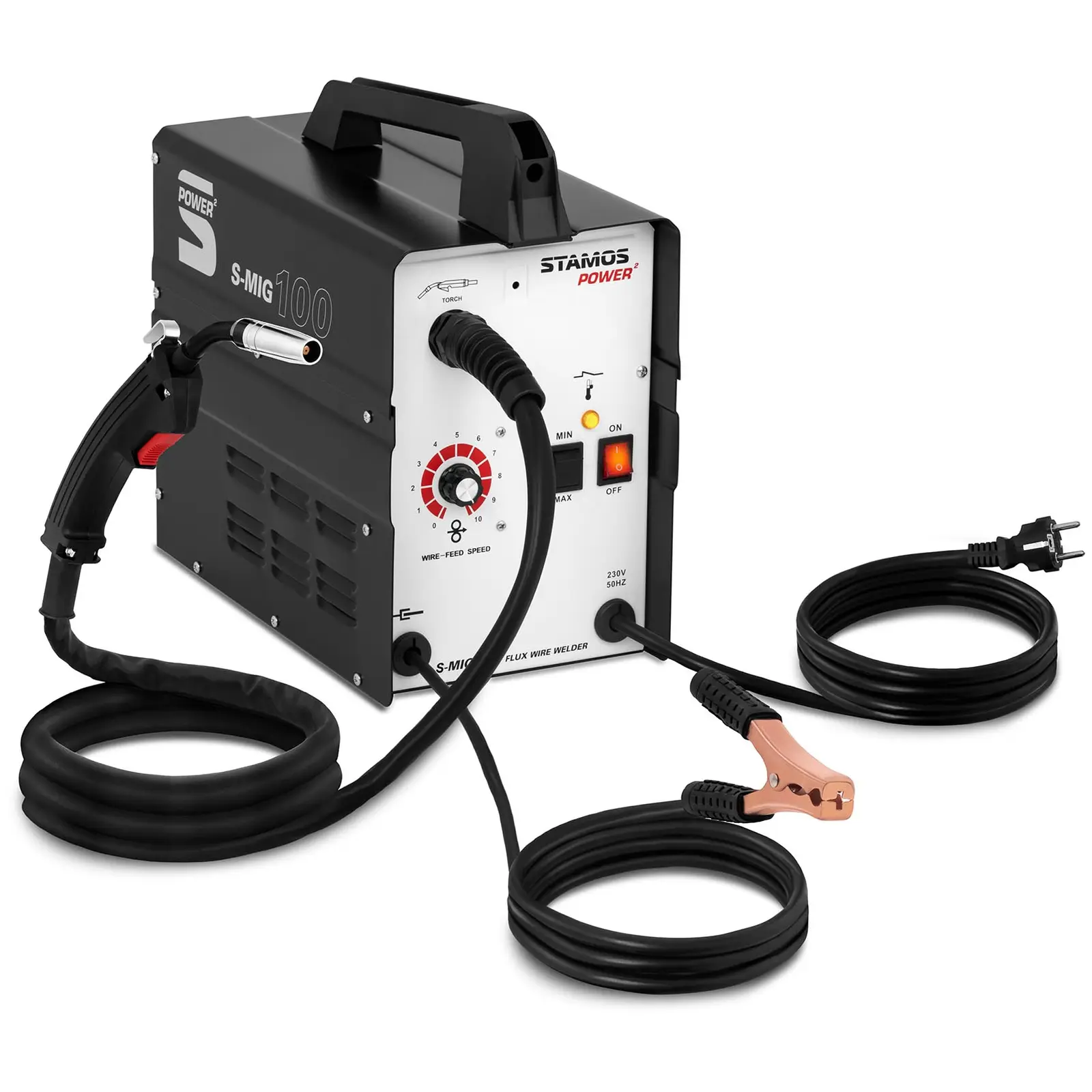

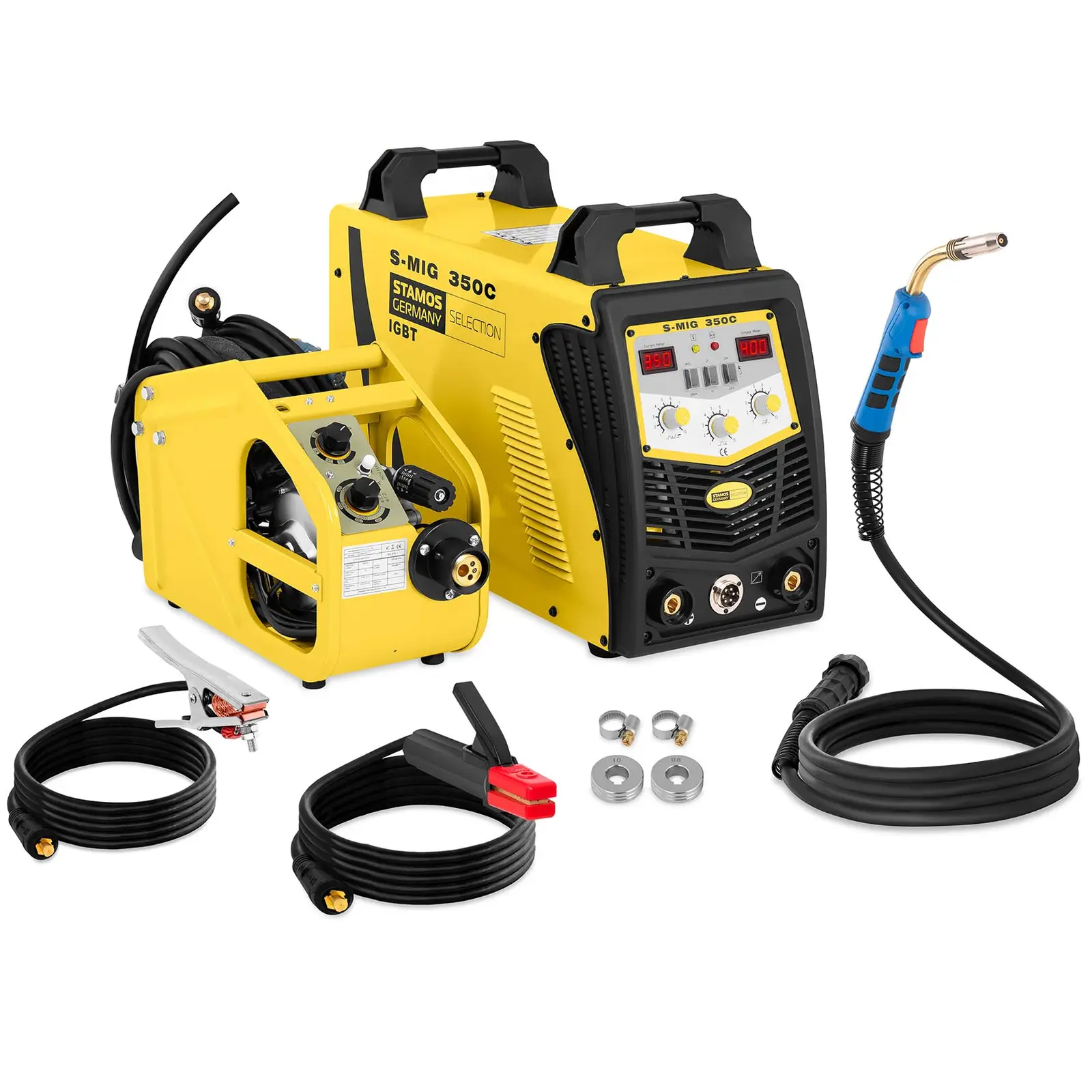
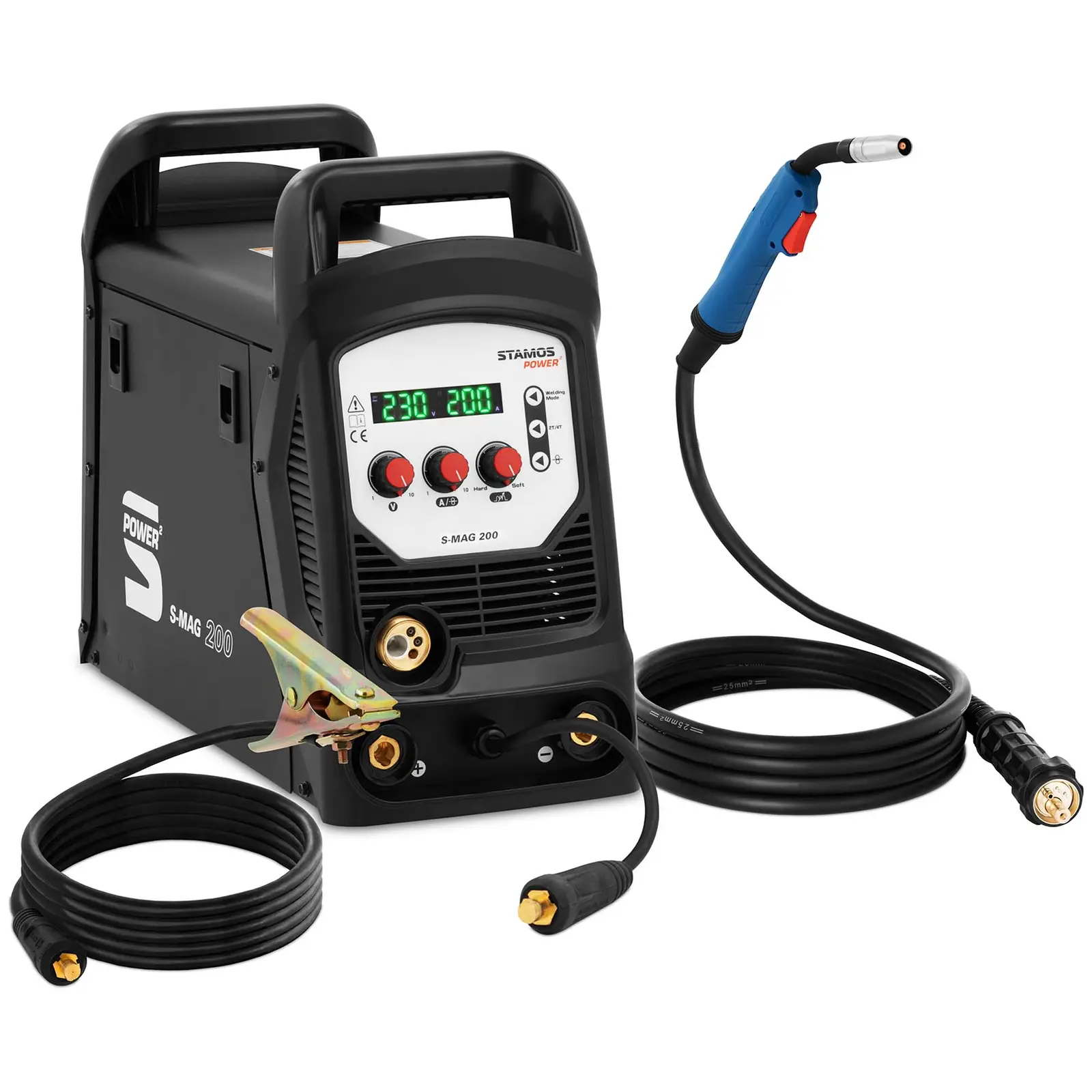


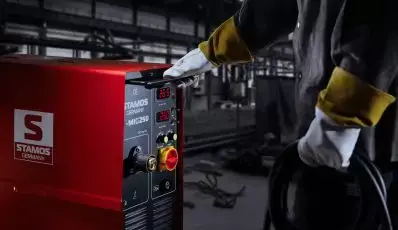
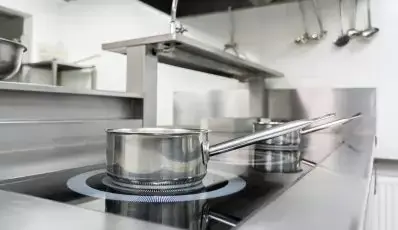
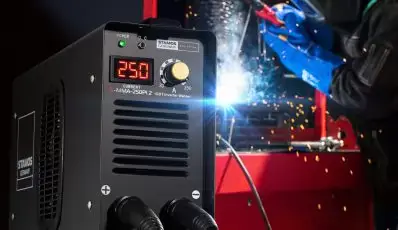
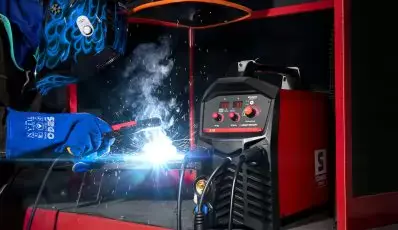

Share